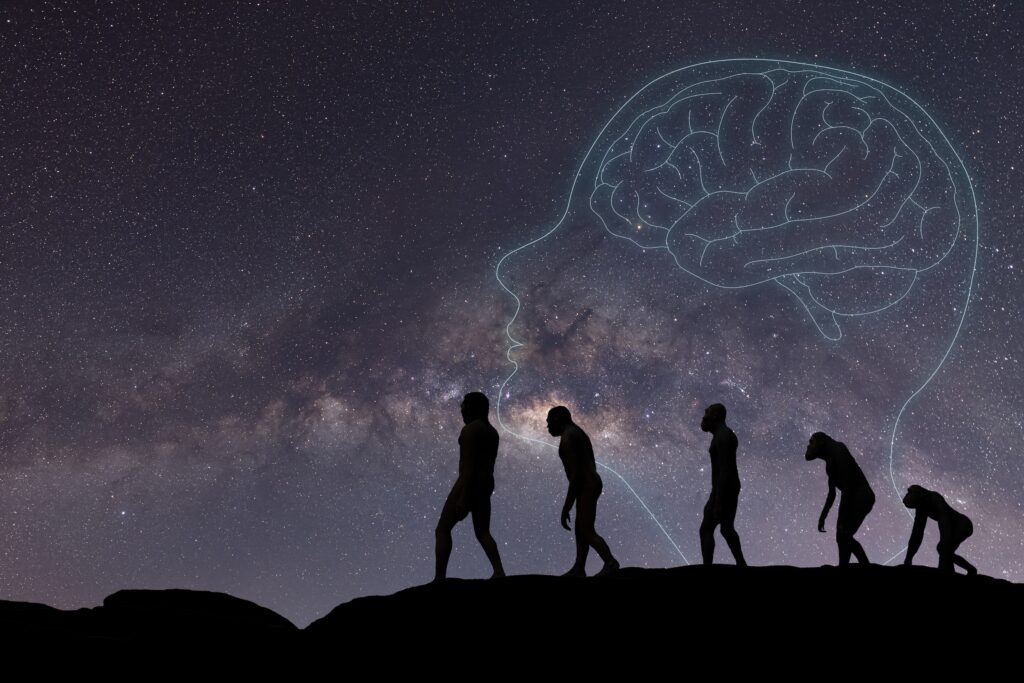The Recognition Problem in consciousness research
Reading | Philosophy
![]() Anoop Kumar, MD, MMgt | 2024-05-05
Anoop Kumar, MD, MMgt | 2024-05-05

To complement the well-known Hard Problem of consciousness, Dr. Kumar introduces the Recognition Problem: one implicitly recognizes and defines consciousness only as completely as one is meta-cognitively aware of it. This is critical in the field of consciousness studies, for that which one is trying to account for—namely, consciousness—is implicitly defined by the limits of one’s introspective self-awareness. Claims of success in reductively accounting for consciousness are thus entirely pre-conditioned on one’s introspective apprehension of the challenge at hand. This may explain why, to some, there isn’t even a Hard Problem at all: they are simply incapable of introspectively recognizing that which the Hard Problem refers to.
David Chalmers framed the Hard Problem of consciousness, which asks why there should be anything like consciousness at all: given that the physical world supposedly has no consciousness, why should any particular configuration of it—such as a brain—yield something as foreign as consciousness? Why would there be such a thing as consciousness that arises from unconsciousness?
It is undeniable that some organisms are subjects of experience. But the question of how it is that these systems are subjects of experience is perplexing. Why is it that, when our cognitive systems engage in visual and auditory information-processing, we have visual or auditory experience: the quality of deep blue, the sensation of middle C? How can we explain why there is something it is like to entertain a mental image, or to experience an emotion? It is widely agreed that experience arises from a physical basis, but we have no good explanation of why and how it so arises. Why should physical processing give rise to a rich inner life at all?
Anil Seth partially responded to this by saying that the Hard Problem doesn’t really help us solve anything. Seth points to what he calls the Real Problem, which is the work of bringing together conscious experience and unconscious objects.
…tackling the real problem of consciousness depends on distinguishing different aspects of consciousness, and mapping their phenomenological properties (subjective first-person descriptions of what conscious experiences are like) onto underlying biological mechanisms (objective third-person descriptions).
In other words, the real work to be done is the work of bridging consciousness and unconsciousness. It’s hard to disagree with that. But how exactly do we build this bridge without tying ourselves in a knot, especially when third-person descriptions are, after all, noted by first-person cognition? To address this question, we need to declare a third problem underpinning the Hard and Real ones: the Recognition Problem.
The Recognition Problem states: I implicitly recognize and define consciousness only as completely as I am aware of it.
This may seem obvious or redundant, but in the field of consciousness studies it most definitely is not. With every other subject other than consciousness, one’s own consciousness is studying and analyzing something else. But in consciousness studies, one’s own consciousness is trying to study itself through objectifying processes. The depth of bias here is impossible to overstate, therefore it would be fundamentally unscholarly to not state. Put another way, there is no greater bias than an experience of consciousness writing a paper about itself without declaring its bias. I too am guilty of not declaring this bias in a related paper.
Accounting for the Recognition Problem, the solution to the Hard Problem may be that consciousness is fundamental, and therefore the very separation of conscious from unconscious is merely a projection of my own state of consciousness. Similarly, the solution to the Real Problem may actually be developing my own consciousness, which then correlates with the apparently external work being done to bridge what seem to be unconscious and conscious experiences. Or maybe not. Either way, the Recognition Problem immediately offers a broader perspective and new strategy for a more complete account of consciousness.
Another critical benefit of the Recognition Problem is that it initially places all consciousness researchers on even footing. One researcher may be seen as senior in terms of experience in the field, but the state of their consciousness may not be as subtle as that of an undergraduate student or even the graduate student they are guiding. Explicitly declaring the Recognition Problem as a bias in all consciousness studies gives everyone an equal starting point with every paper, even if those that are more experienced in the field are highly likely to be more methodologically proficient.
This brings up a challenge the Recognition Problem presents: does it open the door to a free-for-all in terms of what counts as good research? No. Methodology has to be sound, but assumptions, definitions, and experiments remain subject to new formulations.
One of the questions I received from Anil Seth about this was: “How is this different from recognising anthropocentric bias? Also reminds me of the Garland Test: knowing that X is a machine, does a human feel that X is conscious?”
The Recognition Problem is different from anthropocentric bias in that, (a) if there is a shift in consciousness, the very definition of “anthropo-” changes. “Anthropocentric” gives the false impression that the bias is due to being human in our society. It is not. It is a bias due to culture and conditioning of society itself, not humanness. Human experience can easily go beyond a society, a lifetime, a planet, and a species. We must bring this subtle yet paramount clarity to consciousness research. (b) Anthropocentric bias is applicable to all fields of study—indeed to all activity one can do in any area of life. It is so ubiquitous and nonspecific that it is easily overlooked. In consciousness research, however, anthropocentric bias is, by its very nature, magnified to such an extent that it could actually be the central theme of a paper without ever being named. This cannot stand in research.
Moreover, the Recognition Problem is different than Garland because (a) the Recognition Problem questions the premise, “Knowing that X is a machine…” How do we know it’s a machine to begin with? Who or what is it that knows? Garland goes in circles without arriving at the origin of the problem. We cannot start with an external assumption in formal consciousness studies. We start with our own level of awareness. (b) The Recognition Problem is much more direct and demanding than Garland, challenging established researchers and encouraging new ones to proceed with rigor by presenting obstacles to rigor up front.
When we acknowledge the Recognition Problem, research will be infused with new life, opening up the field of consciousness studies to rigorous new perspectives that afford us key insights into the nature of consciousness. We may even find out that consciousness never had a problem at all.
So here is my ask: every research paper referencing consciousness must acknowledge the Recognition Problem, lest it remains an elephant of undeclared bias giving research an extra air of validity that may not be warranted.

Essentia Foundation communicates, in an accessible but rigorous manner, the latest results in science and philosophy that point to the mental nature of reality. We are committed to strict, academic-level curation of the material we publish.
Recently published
Reading
Essays
Seeing
Videos
Let us build the future of our culture together
Essentia Foundation is a registered non-profit committed to making its content as accessible as possible. Therefore, we depend on contributions from people like you to continue to do our work. There are many ways to contribute.















